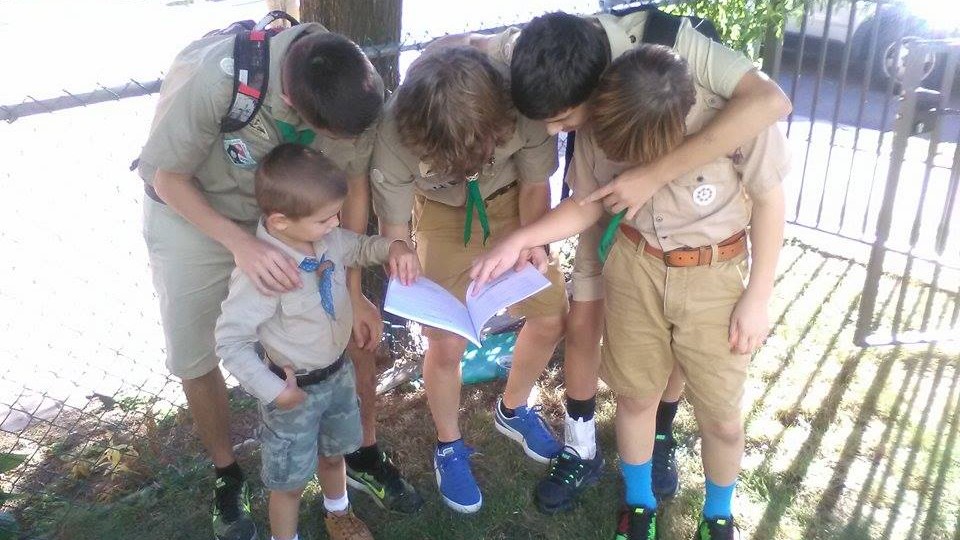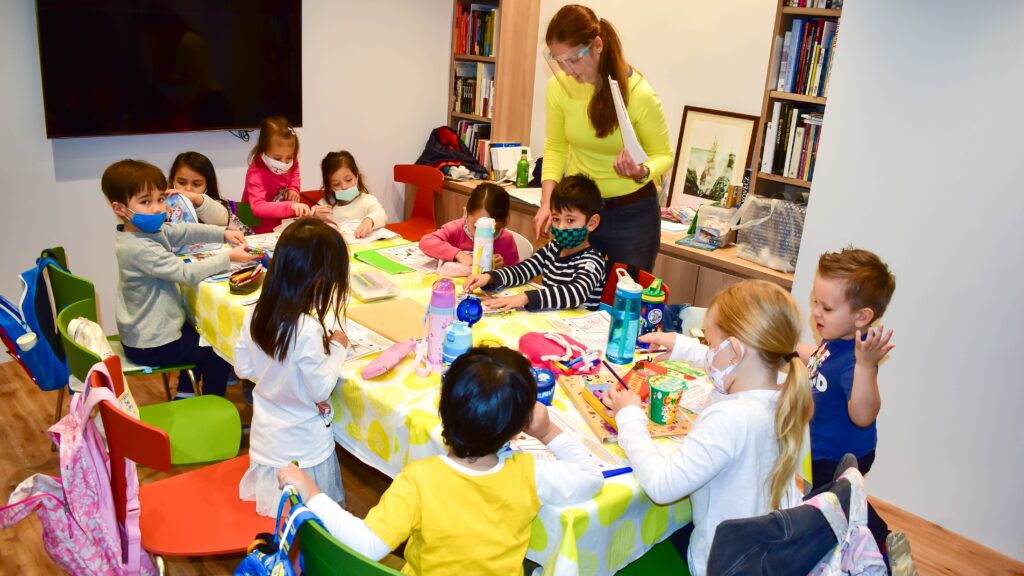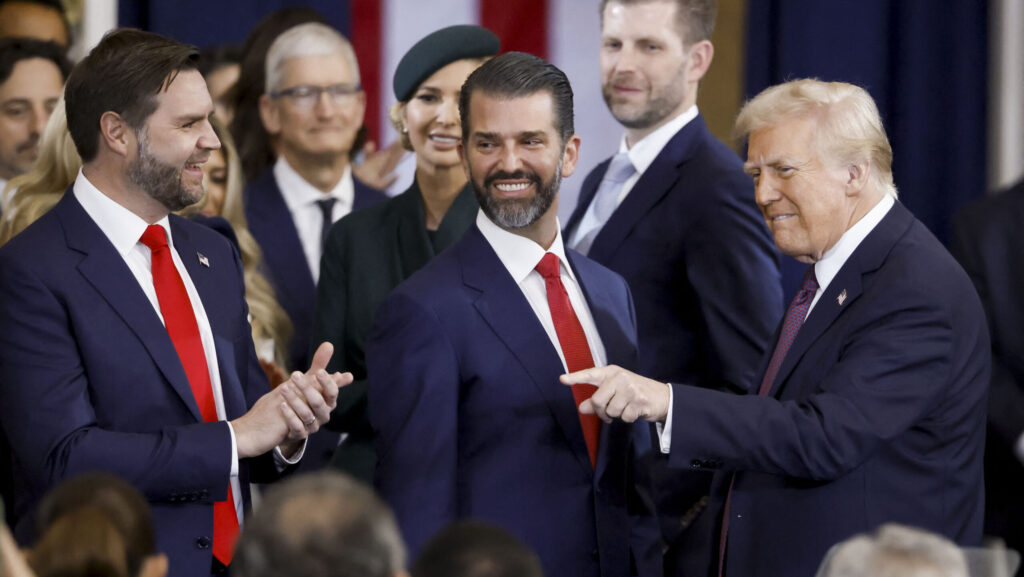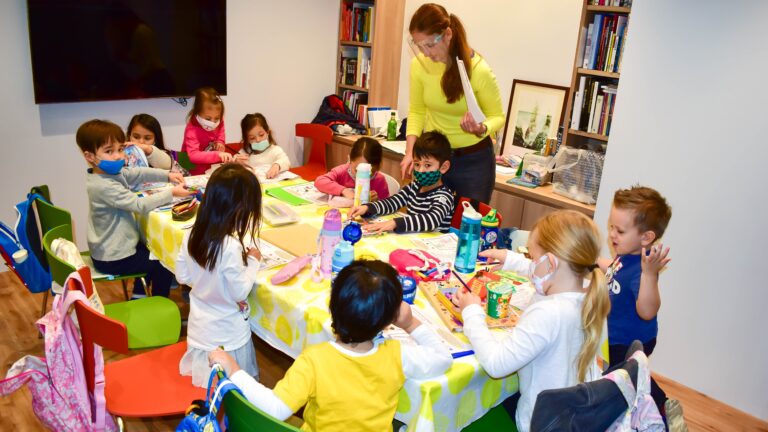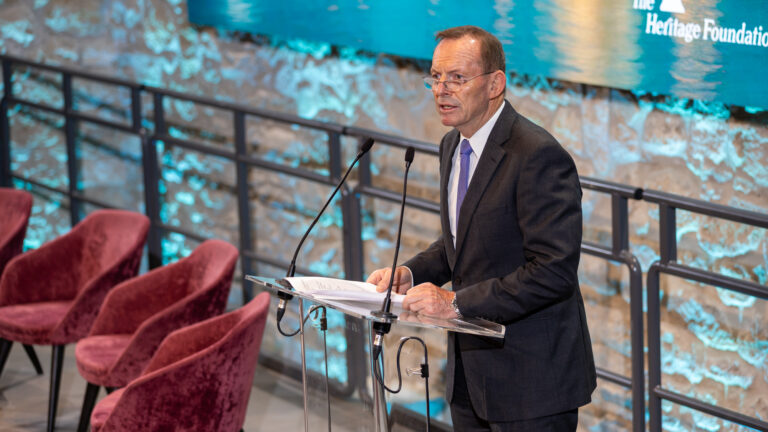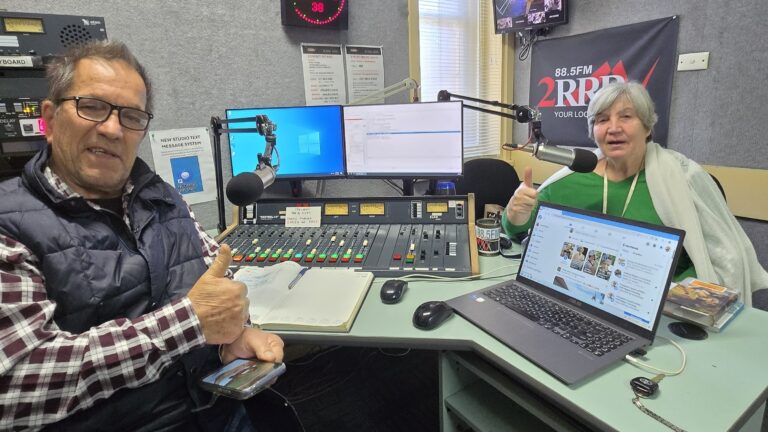This is an abridged version of the original interview, published online on 777 on 06 June 2023.
23-year-old Luca Hadi, a Kőrösi Csoma Program (KCSP) scholar, has been helping the Hungarian scout troops in Garfield, the Kőrösi Hungarian School in Montclair, and the St. Stephen Hungarian Parish community in Passaic, all in New Jersey, between September 2022 and June 2023.
***
Tell us about your family background.
I grew up in Nagymaros, Hungary, a beautiful town in the Danube Bend, which I believe is the most beautiful place in the world. I have two sisters and two brothers. My extended family is also quite large. My grandparents have been involved in organizing the Nagymaros Youth Meetings from the start, and they still host the organizers, priests, and speakers. My parents also contribute greatly to the local community and the parish. My father is an IT specialist and owns several businesses operating in the field of health communication and training. He is also the vice president of the ÉrMe (ÉrtékMegőrző, ‘ValuePreservation’) Network, which regularly creates opportunities for Christian entrepreneurs and business leaders to meet. My mother is a landscape architect, and after spending several years at home with us, she now works for the Cistercian sisters in nearby Kismaros, where she helps with various tasks, including managing their new jam factory. My father is an acolyte at the parish and the founding president of the local Cédrus Association, which focuses on sports and arts, aiming to contribute to character development through cultural, artistic, and sports activities. My mother led Sunday school for ten years and currently assists with a youth community. Both of them are involved in the KétIgen Foundation, which helps long-term relationships by involving professionals. My father is the president of the foundation, while my mother helps with graphic work. Additionally, they are members of the Jesus in Families Community in Budapest and assist engaged couples.
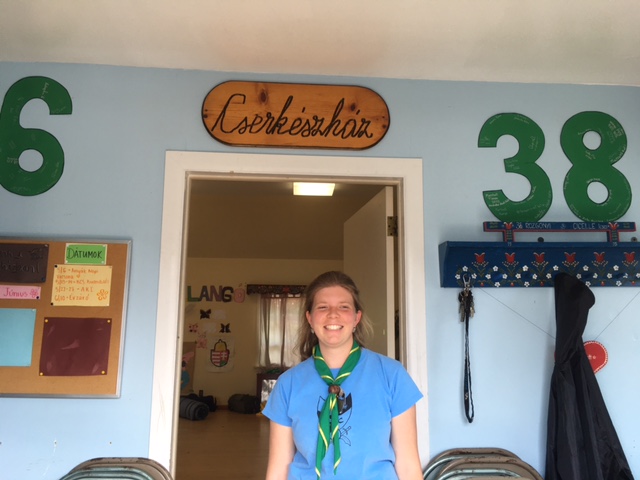
Are they scouts, too? Because you are a very committed one…
Both of them are members of the Regnum Marianum network (a Catholic youth education network that overlaps with the Hungarian scouting movement in many ways), but we couldn’t join Regnum at the time because of the distance between our hometown and Budapest, so we started scouting instead. Four of the five siblings are already patrol leaders, and my older sister will soon become a troop commander. While in America, I held online meetings for my patrol back home (called the Gyöngyikék), since they are very important to me—as is scouting. I’m an assistant officer; I was a trainer in Szeged for three years, too. I attended the local elementary school in Nagymaros for four years and graduated from the Piarist High School in Vác. Then, my best friend and I applied to a teacher training curriculum at Apor Vilmos College, where I will graduate next year. My field is homeland and folk studies, which I’m very happy about because I have always wanted to study ethnography, but I ultimately chose teaching—maybe after that, I can follow up with ethnography studies. I really enjoy studying at this college, because the professors have a great attitude: if we have any new ideas, they support them, or at least don’t reject them—which is important to me because I often have new ideas…
What kind of ideas have you recently come up with?
Last year, we created a board game for one of the classes, and I came up with the idea of publishing it. The rector said no, but suggested that we should take it to the National Student Conference (Hungarian abbreviation: OTDK). We worked on it a lot—the competitive part was fully completed, the cooperative game part wasn’t—but we still won a special prize there. We haven’t given up on the publication; we still want to use it as a teaching support tool in homeland and folk studies classes, as it fits into a school lesson and offers many differentiation opportunities. We are looking for supporters for this initiative. Another long-term plan of mine is to launch a school, inspired in many ways by the brilliant Búzaszem School in Göd.
What else did you do and had to leave behind at home when coming to the U.S.?
I participated in the ‘Teach for Hungary’ program, which supported disadvantaged children, for example, in Ludányhalászi, where we played with them, helped them study, and hoped they’d continue their studies. Although I’m not with them now, some of them wrote to me throughout the year, and we sometimes spoke. They’re also waiting for me to return. I’ve been learning music and folk dance since I was a child: many great folk dance teachers, including Gergő Sánta and Anna Sánta-Bíró, taught me from 3rd to 8th grade. They later became members of the Hungarian National Folk Dance Ensemble and the leaders of the Bartók Dance Ensemble. I continued folk dancing during my high school and college years.
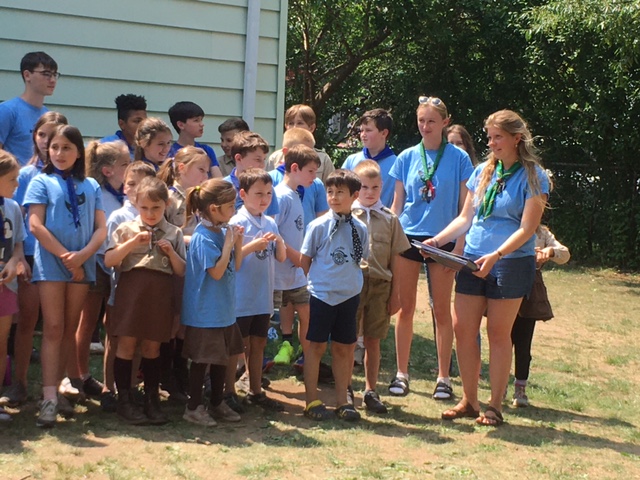
How did the idea of the KCSP scholarship come about?
Father László Balogh, the currently serving Hungarian Catholic priest in Passaic, New Jersey, is an old friend of my parents. He mentioned that there was an opportunity to come to Passaic through the KCSP program to help the local Hungarian community. I remember everything happened so suddenly after the call for applications was announced. I had to submit my application, write a CV, ask for reference letters very quickly, as well as think about what and how I’d finish, before my leave, as I didn’t want to leave scouting and the Teach for Hungary program unfinished. In addition, the interview for the program was on the first day of the patrol leader training camp, so I arrived at the interview dressed up and with a large backpack, and then took the train straight to the camp venue. The whole process was very exciting: I only found out on 18 August that I could come, and my visa interview wasn’t until 14 September, by which time they were already waiting for me here. So, I bought flight tickets from my own savings and hoped that I’d make it in time. I got the visa on 19 September, and two days later, I was already in transit. I feel that God arranged everything to work out well. This confirmed to me that it was the right decision to take on this challenging task.
You were thrown into the deep end right away: you participated in a scout outing on your very first weekend…Did you know what to expect?
Not really. Before leaving, I insisted on speaking with Fanni Kozma, the Garfield troop commander and my KCSP mentor, to ask what I should bring and how I should prepare. I remember we were hiking in the Tatras, and while the others were playing board games, I eagerly awaited her call from the U.S. I didn’t even know whether we’d speak in Hungarian or English and what I should ask or say…I was quite uninformed. Fanni, who came to the U.S. from Hungary when she was one year old and speaks Hungarian perfectly, was very kind and encouraging. She only asked me to bring some board games with me. I stayed at her parents’ house for a few months; they even lent me a car for a while, because they live far from the Garfield Scout Home and the Passaic parish. I’m very grateful to them for welcoming me and treating me like a family member. Fanni helped me organize my schedule, too. First, she showed me around the scout home and we discussed my tasks there, then, the two leaders of the Montclair weekend Hungarian school and the youth leader of the Passaic parish also met with me to discuss my responsibilities.
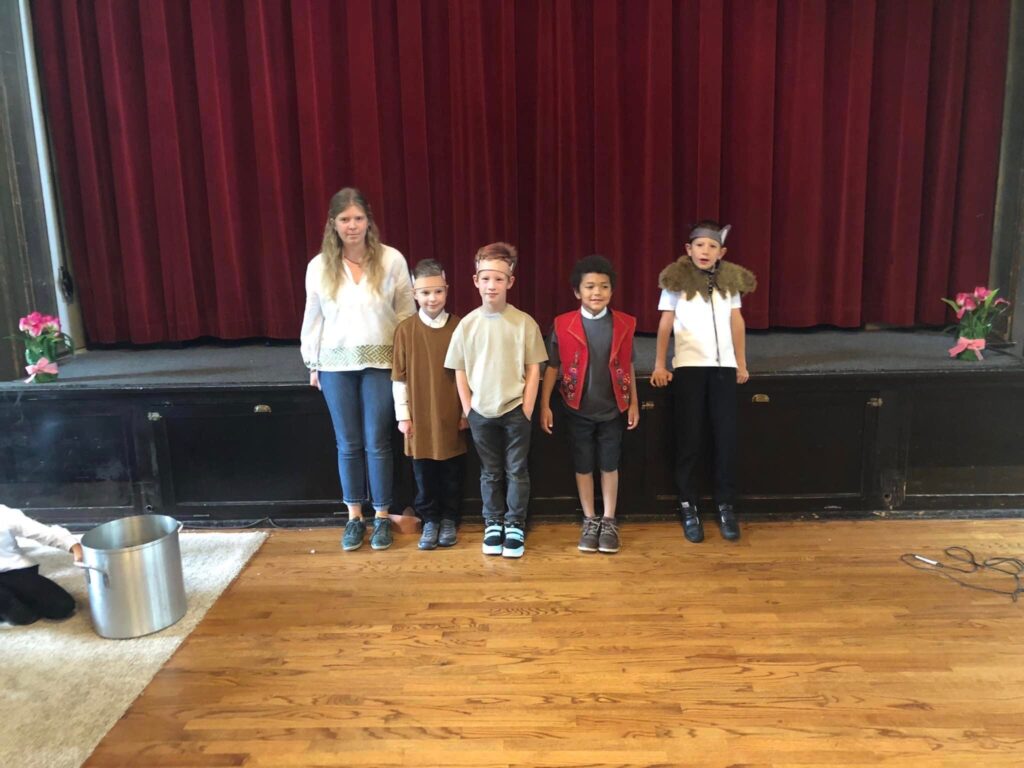
What tasks did you have during these past nine months?
At the Hungarian weekend school, I had a small second-grade class including four boys. I really enjoyed being with them, and I quickly realized that we wouldn’t be doing things like gluing and coloring for hours. I divided the material into smaller sections and included a lot of movement activities, as it was understandably hard for them to sit still, because the Hungarian school is on the sixth day of their week. The real goal is to preserve Hungarian culture, and along with that, to teach these children to read and write Hungarian. By the end of the year, I noticed that they were paying attention to only speaking Hungarian—we even had a game for that—and there was one child who, at first, didn’t want to speak at all, but by year-end, it was hard to keep him silent. When the school directors found out that I knew folk dance, they asked me to teach that too. I agreed, but made it clear that I wasn’t a professional dancer and I had never taught dancing before. From that point, we had half-hour folk dance and singing lessons, divided by age group.
What about scouting?
Yes, I taught the youngest scouts and their younger siblings folk dance once a week, and it wasn’t easy to bridge the age differences. Looking back, it was very good, although at the beginning I was very nervous, because I felt I didn’t have enough tools. I, of course, searched for ideas about the right teaching method, learned a lot from them, and after a while, I started enjoying it. My goal was for the children to get to love folk dance, and I succeeded. However, when the organizers from New Brunswick, NJ invited me to the Pontozó folk dance festival, which has nearly 50 years of history and is a serious competition where professional dance teachers prepare participants, I thought it was too big of a task to prepare my group for a public performance in two months, since I had never done anything like that before. In the end, I took it on, and looking back, I realized again I shouldn’t have been so nervous: the children were very enthusiastic and cute and enjoyed the performance so much that they wanted to go back on stage afterwards.
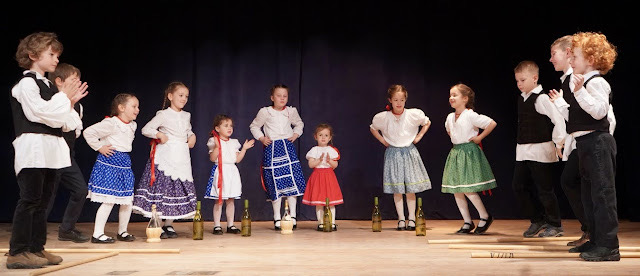
In scouting, I was mainly a substitute patrol leader, but there was always something to help with. Since I had gained a lot of experience in various situations before, I wasn’t stressed when I found out five minutes before the start of a weekly session that I had to substitute for a patrol leader, hold a patrol meeting, or deal with a child whom the patrol leader couldn’t manage. The ones ‘in trouble’ actually enjoyed being with me, because of the attention I was paying only to them…I was also involved in a lot of other matters: I taught new games, participated in smaller and larger scout trips, inventoried the scout house and its books, set up a ‘handicraft center’, and organized 15 March and Mother’s Day performances.
What are the main differences you see between Hungarian scouting in Hungary and abroad, i.e., in the U.S.?
They are very different in many ways, yet similar in others—that’s why I think both sides would benefit a lot if they worked together more closely. Perhaps this shouldn’t even be expected from the leadership, but initiated by us. If I had one more year, I’d connect the Garfield and Nagymaros teams more, because I’m convinced that both sides could learn a lot from each other.
The biggest difference is that in America, maintaining Hungarian identity is the goal, whereas that’s given in Hungary. For example, the frame stories here are always related to Hungarian history or the Hungarian identity, and I often felt like scouts here sang more Hungarian folk songs than at home. This is also important because while singing, the accent disappears, and it creates the experience of singing perfectly in Hungarian. This is a lifelong shared experience for Hungarian scouts abroad. I think it’s great that in Fillmore, in New York state, at the Sík Sándor Scout Park, there are comprehensive programs like the Central Obstacle Course, where Hungarian scouts from across the U.S. and Canada come together. Or the summer patrol leader training camps, where participants also come from South America and Europe.
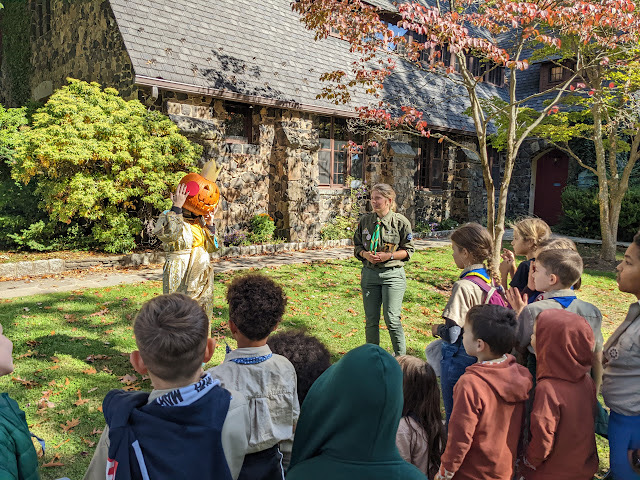
Another difference is that in Hungary, typically parishes or Christian schools and less often civil associations act as the support organizations of the local troops, whereas in America, it’s normally scout parent communities acting in that capacity, so scouts don’t have to be closely tied to church or civil organizations. Nevertheless, the connection between the Garfield scout troops and the Passaic parish is close: there is a yearly scout mass, the trips often end at masses, the nativity play is also presented to the church community, and this year, during Lent, there was again a Holy Tomb patrol organized by local scouts. Scouts participate in national commemorations (15 March, 23 October, etc.) held at the Passaic parish. At the same time, scouting is also open to those who otherwise don’t attend church services. This cooperation is very important because Hungarian communities can thus survive in the long term.
That’s why the parish was the third place where you helped a lot. What specific tasks did you have there?
I don’t have a teaching degree (yet), but at home, I helped my mother a lot with the kindergarten catechism classes, and later with the older ones as well, to whom I will return when I am again in Hungary. Here, I helped with the smallest group (four- to seven-year-olds), once a month, I led the crafts, and during Lent, I organized an interactive Stations of the Cross for the children. I sang and recited at the performances of the Lant és Toll choir (23 October, World Wars commemoration, 15 March, Pentecost, Trianon), and if needed, I helped the Lantocska children’s group. I learned a lot from all of these.
‘I had very good personal experiences, but it was the community that made me really happy to be here’
Did you have time to travel or look around?
I visited my friends in Wisconsin and my relatives in Tennessee, saw Niagara Falls and Buffalo, went to Toronto, Canada, and visited Washington, D.C., and New York City several times. Of course, I also traveled around New Jersey. I spent my last week with Fanni, hiking in Maine. I think Passaic and Garfield in New Jersey are not among the world’s most beautiful places, but they have good public transportation, which is quite rare in the U.S., and there is this vibrant Hungarian community here.
How did you feel overall? What gave you spiritual refreshment?
I felt very good, but I’m glad I don’t have to decide on the continuation, because it’d be very difficult. I will really miss the people here. I’m curious, for example, what will happen with each child five, ten, or 15 years from now. At the same time, I’m really looking forward to meeting my friends back home, and I need to finish my college studies, too. It was a huge support for me that many family members and friends in Hungary thought about me and prayed for me, for which I’m very grateful. Many times, they sent me all sorts of things: letters, jam, honey…(laughs) Fortunately, technology allowed me to stay in touch with my family and friends on a daily basis, but the time difference was a challenge. I learned to trust more in God, especially because of the many new adventures and unexpected situations. It was nice to see how people with varying ethnic or cultural backgrounds pray to and praise God. In Passaic, I attended Polish church services, too, we went to a gospel church, and once to a Christian music concert. These all gave me strength whenever I was really homesick. I had very good personal experiences, but it was the community that made me really happy to be here. I’m very grateful to Fanni, Father László, and the Hungarian community for everything. They will be the ones I’ll miss the most.
What are three things you’ll take with you?
I’ve reinterpreted what it means to be Hungarian. At home, if someone dances, wears folk costumes, or puts up a Hungarian flag, many people call them out ‘to showing off to be Hungarian’, but here, I learned that this is not an empty ‘Hungarianism’; the symbols are important and have a preserving power. And they’re beautiful. I’ll also take home a lot of ideas that I want to implement, such as the Lantocska children’s activity and some parts of the scout weekend programs. The 3rd thing to note is the attitude, the persistent sacrifice for the greater good. No matter how busy the week is, the adults still take the children to Hungarian school, scouting, and mass on weekends; in the summer, they even travel several times to Fillmore (which is a five-to-six-hour trip in one direction) for Hungarian school camps and scout camps; they try to speak only Hungarian with their children, setting an example for the youth. I admire their level of dedication.
Read more Diaspora interviews:

